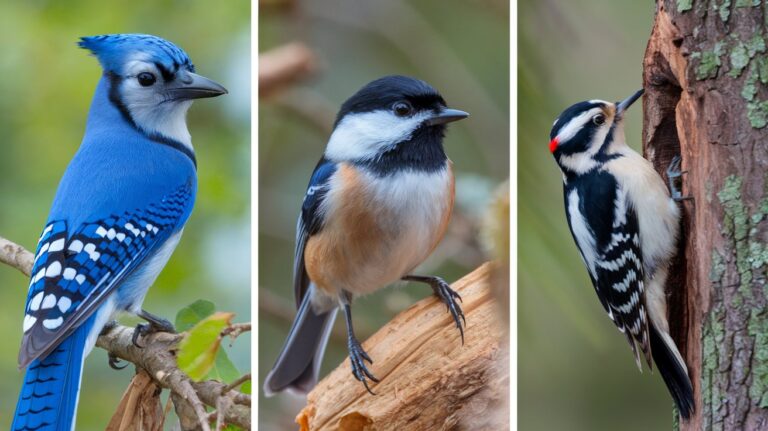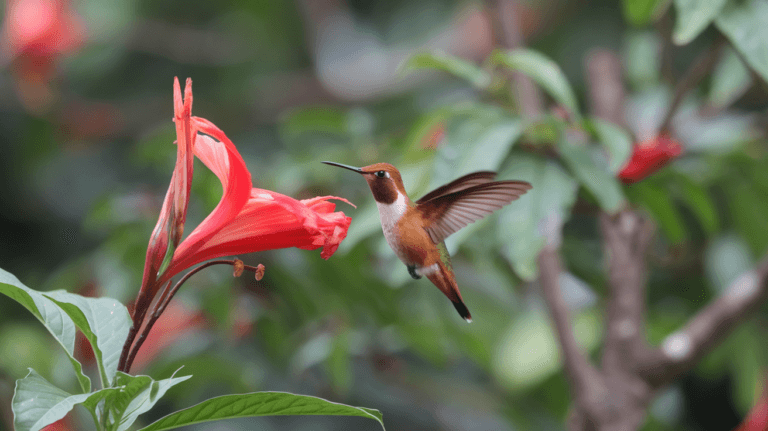25 Popular Backyard Birds in Nevada (With Pictures!)

Nevada, with its diverse landscapes ranging from arid deserts to lush oases, is home to an impressive array of bird species. In fact, the state boasts at least 491 officially recorded bird species, making it a haven for birdwatching enthusiasts.
While this vast number includes both resident and migratory birds, this article will focus on 25 of the most popular backyard birds commonly spotted in Nevada. From the cheerful American Robin to the melodious Northern Mockingbird, these avian visitors bring life and color to local backyards.
Jump to a Section
- 1) House Finch
- 2) Mourning Dove
- 3) Dark-eyed Junco
- 4) White-crowned Sparrow
- 5) Lesser Goldfinch
- 6) Northern Flicker
- 7) California Quail
- 8) House Sparrow
- 9) American Robin
- 10) Woodhouse’s Scrub-Jay
- 11) American Goldfinch
- 12) Northern Mockingbird
- 13) Cooper’s Hawk
- 14) European Starling
- 15) Spotted Towhee
- 16) Pine Siskin
- 17) Mountain Chickadee
- 18) Red-winged Blackbird
- 19) Western Meadowlark
- 20) Great-tailed Grackle
- 21) Black-billed Magpie
- 22) Barn Swallow
- 23) American Crow
- 24) Cedar Waxwing
- 25) Yellow-rumped Warbler
1) House Finch
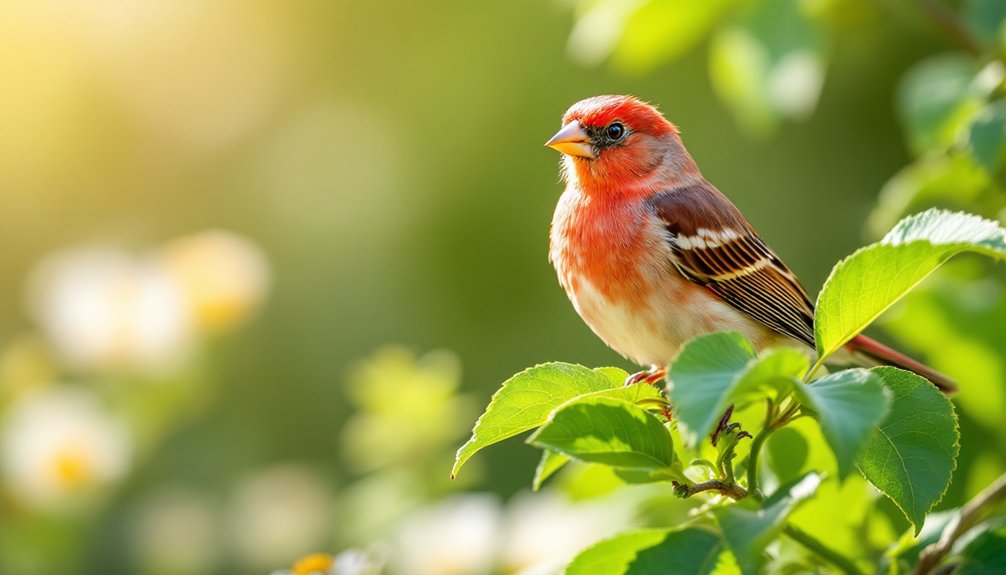
Though it might seem unassuming at first glance, the House Finch is a fascinating resident of Nevada’s backyards.
You’ll notice their vibrant red plumage, especially on the males, which stands out against the desert landscape.
They’re social creatures, frequently gathering in flocks.
Listen for their cheerful, warbling songs as they dart from tree to feeder, bringing life and color to your yard.
2) Mourning Dove
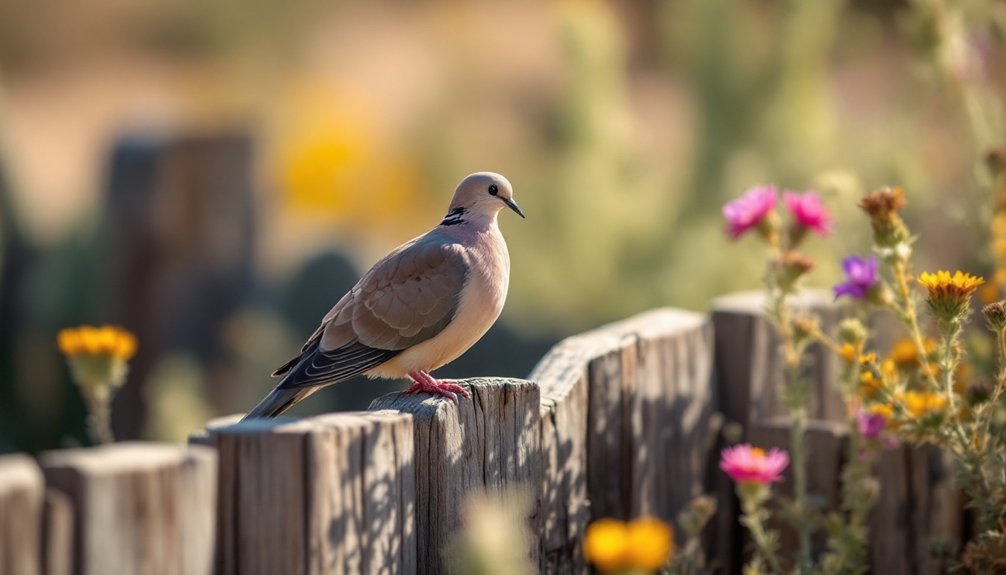
Graceful and serene, the Mourning Dove is a common visitor to Nevada’s backyards.
You’ll often spot them perched on telephone wires or foraging on the ground. Their soft cooing calls echo through the air, providing a soothing soundtrack to your garden.
With their plump bodies, long tails, and muted gray-brown plumage, they blend effortlessly into the landscape, offering moments of tranquil beauty.
3) Dark-eyed Junco
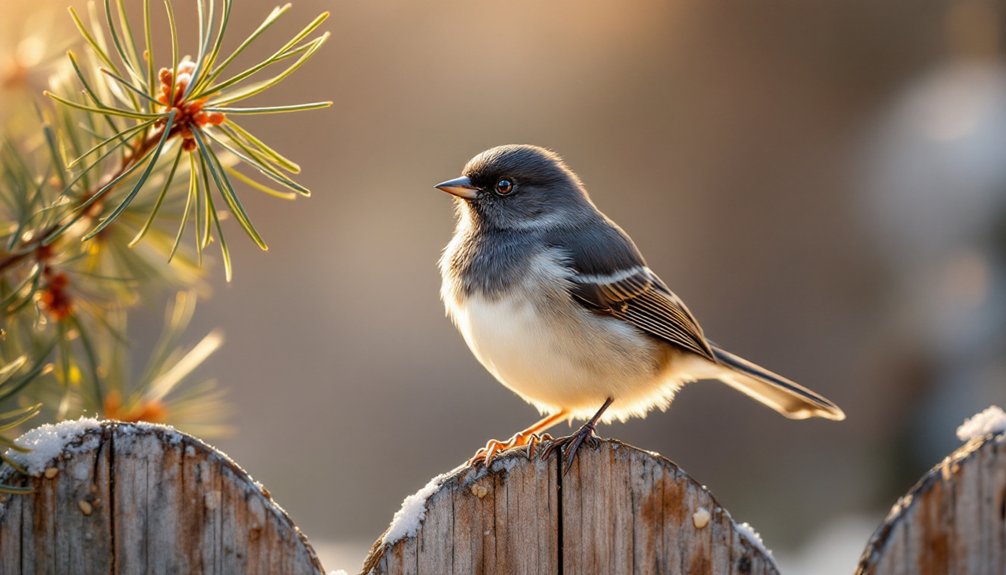
When winter arrives, you might notice the Dark-eyed Junco flitting around your backyard, adding a splash of color to the drab, cold landscape.
These small, sparrow-like birds, with their distinctive dark hoods and white bellies, are a delightful sight. They forage on the ground, searching for seeds and insects.
You’ll often see them hopping energetically, their tiny bodies contrasting with the snow.
4) White-crowned Sparrow
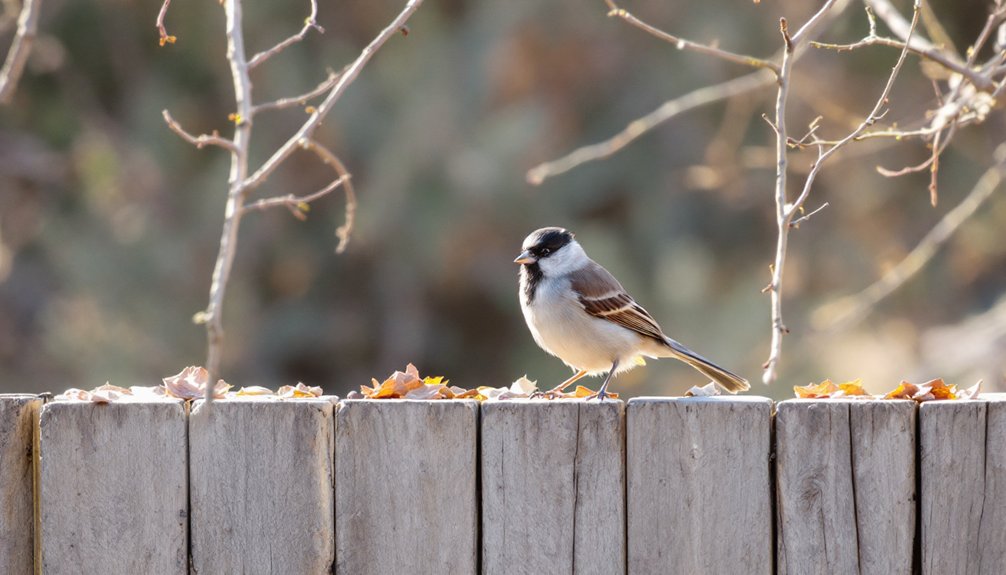
The White-crowned Sparrow is a medium-sized songbird with distinctive black and white stripes on its crown.
These charming birds are most commonly spotted in Nevada during fall and winter months (October through March) when they migrate from northern breeding grounds.
Look for them foraging on the ground beneath shrubs and feeders, where they primarily seek seeds and insects. Their melodious song consists of clear whistles and trills, making them easy to identify even before you spot them.
5) Lesser Goldfinch

The Lesser Goldfinch is a tiny, vibrant bird that brings a splash of color to Nevada backyards year-round, though they’re most abundant from spring through fall.
Males display bright yellow underparts with black caps and wings, while females show more subdued olive-yellow plumage. These acrobatic birds prefer thistle and sunflower seeds, often hanging upside-down on feeders or seed heads.
Listen for their sweet, canary-like warbling songs as they gather in small flocks around backyard feeders, especially those filled with nyjer seed.
6) Northern Flicker
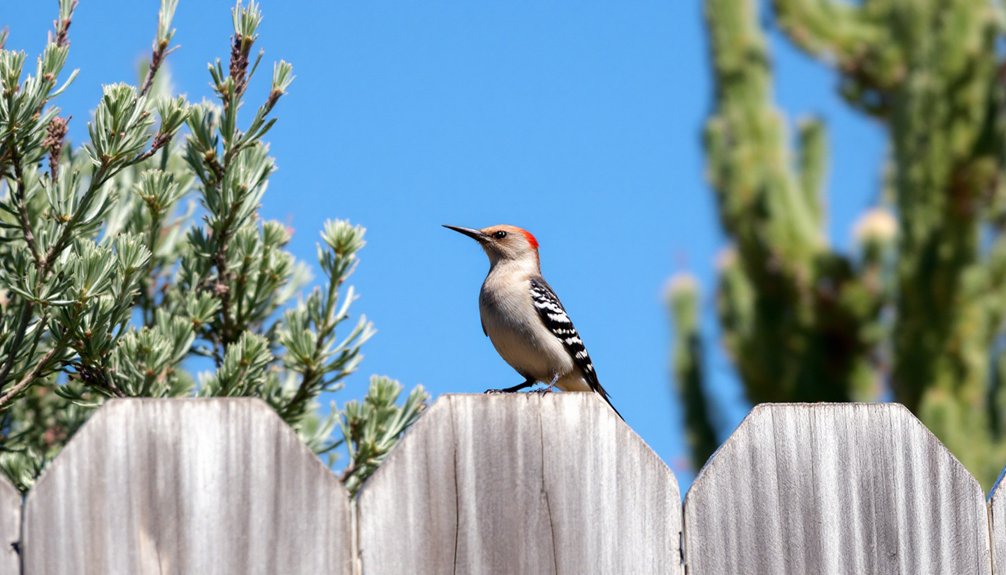
The Northern Flicker is a large, striking woodpecker that frequents Nevada backyards throughout the year.
Easily identified by their spotted belly, black bib, and red or yellow flashes under their wings and tail (western Nevada flickers typically show red, while some eastern migrants show yellow).
Look for them in the early morning or late afternoon when they’re most active, often announcing their presence with a loud, rolling call and distinctive undulating flight pattern.
7) California Quail
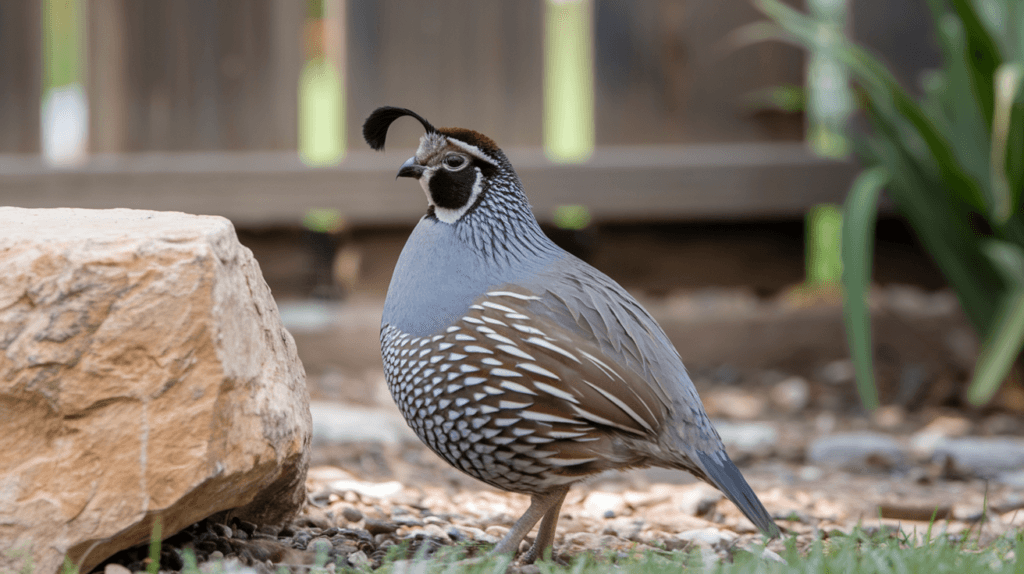
A delightful sight in Nevada backyards, the California Quail captivates with its charming appearance and social behavior.
You’ll notice their distinctive plume, resembling a teardrop, perched atop their heads. Often seen in small groups, these birds forage for seeds and insects, creating a bustling scene.
Their soft, rhythmic calls add a melodic touch, making your backyard feel like a gentle nature concert.
8) House Sparrow
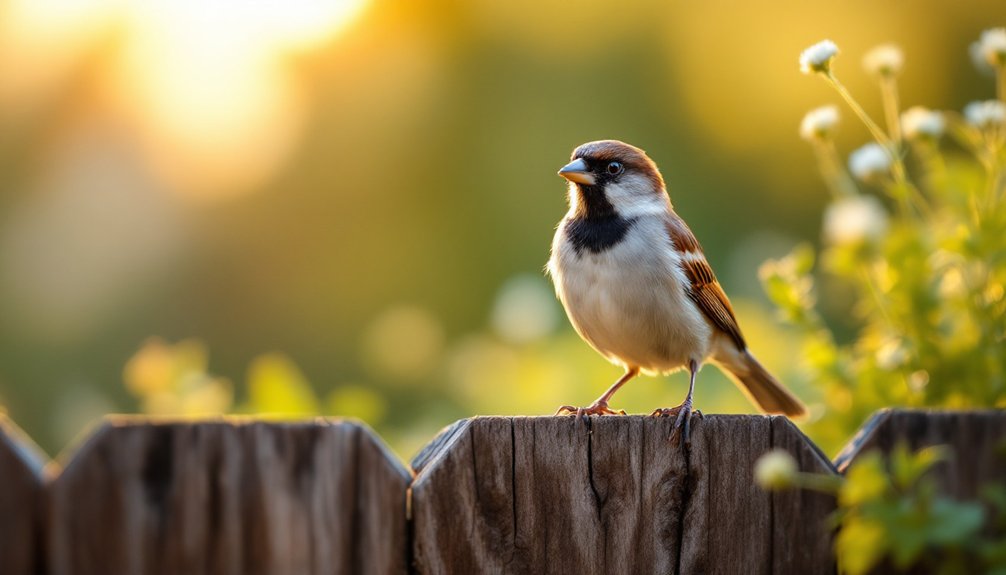
Despite being small in size, the House Sparrow is a robust and adaptable bird frequently found in Nevada backyards.
You’ll often see them hopping around, searching for seeds and crumbs. Their brown, gray, and black plumage blends well with urban surroundings, making them quite inconspicuous.
These social birds often gather in flocks, chirping noisily as they communicate. They’re resilient and thrive in bustling environments.
9) American Robin

Familiar and beloved, the American Robin is a common sight in Nevada backyards.
You’ll notice its bright orange breast and cheerful song, marking the arrival of spring.
These birds feed on worms, insects, and fruit, often hopping across lawns in search of food.
Robins build nests from mud and grass, typically in trees or shrubs, providing a perfect environment for raising their young.
10) Woodhouse’s Scrub-Jay
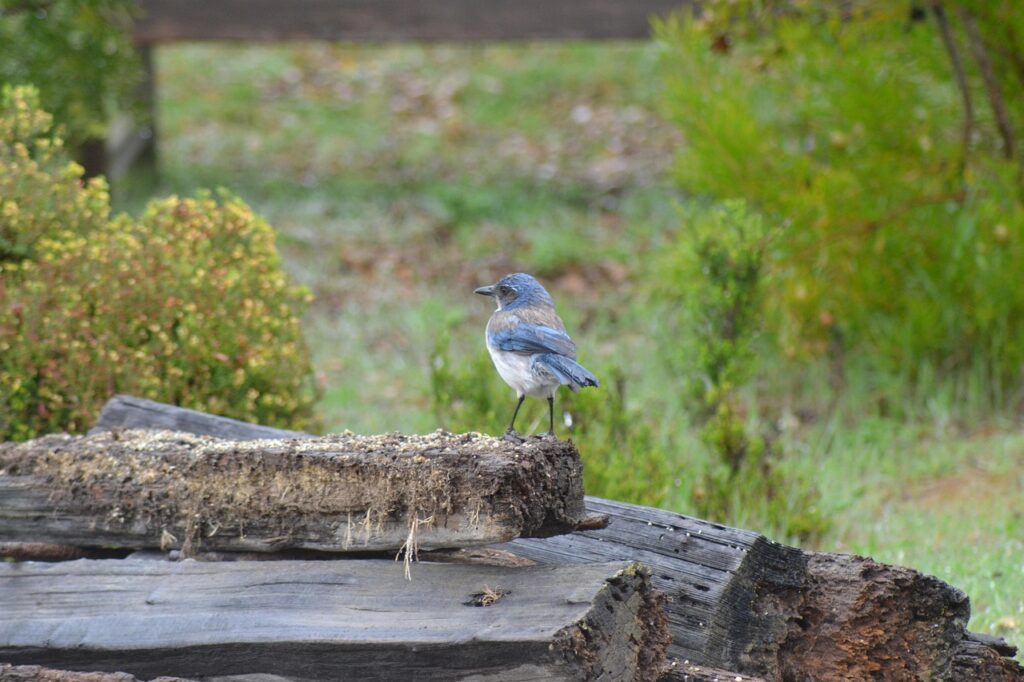
The Woodhouse’s Scrub-Jay is a strikingly beautiful corvid with vibrant blue upperparts, pale gray-brown back, and whitish underparts.
These intelligent birds are year-round residents in Nevada’s pinyon-juniper woodlands and scrubby areas, becoming increasingly common in suburban settings with mature trees and shrubs.
They’re most active during morning hours, boldly announcing their presence with harsh, raspy calls as they hop through branches or visit platform feeders.
11) American Goldfinch

The American Goldfinch transforms dramatically with the seasons, with males sporting brilliant lemon-yellow plumage with black wings and cap during breeding season (late spring through summer), then molting to a more subdued olive-brown similar to females during winter months.
These cheerful birds visit Nevada backyards primarily from late fall through early spring, often traveling in small, chattering flocks that announce themselves with sweet, lilting “po-ta-to-chip” flight calls.
American Goldfinches are strict vegetarians, preferring nyjer, sunflower hearts, and seeds from plants like coneflowers, cosmos, and zinnias, making them wonderful allies for gardeners who leave seedheads standing through winter.
12) Northern Mockingbird
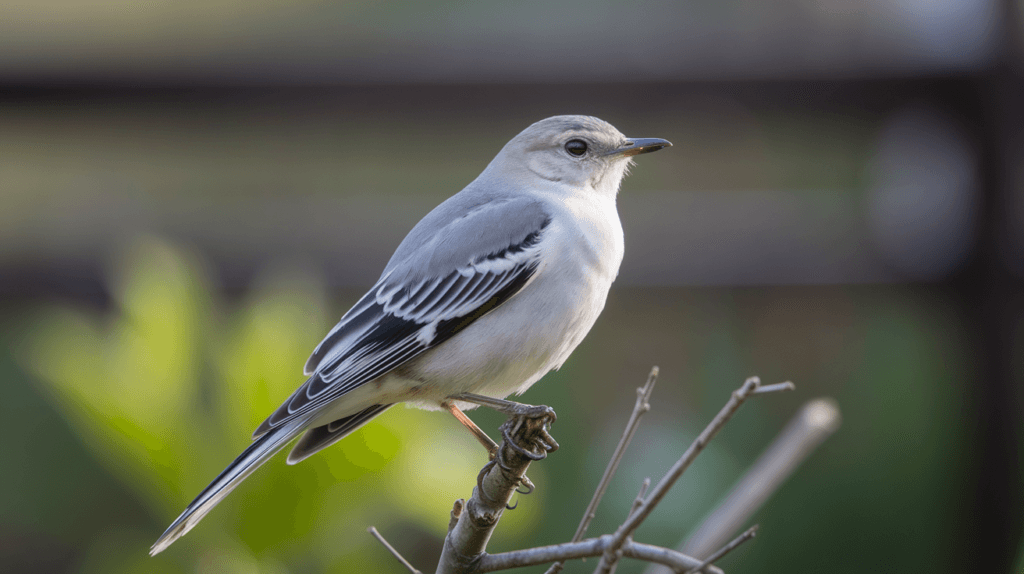
The Northern Mockingbird is a medium-sized songbird with sleek gray plumage, long tail, and distinctive white wing patches that flash dramatically during flight.
These territorial birds are year-round residents throughout Nevada, becoming increasingly common in suburban neighborhoods with open lawns, scattered shrubs, and ornamental fruit-bearing plants.
Northern Mockingbirds are renowned for their extraordinary vocal abilities, mimicking dozens of other bird songs, mechanical sounds, and even car alarms in lengthy medleys that they perform from prominent perches, often continuing through the night during spring and early summer breeding season.
13) Cooper’s Hawk
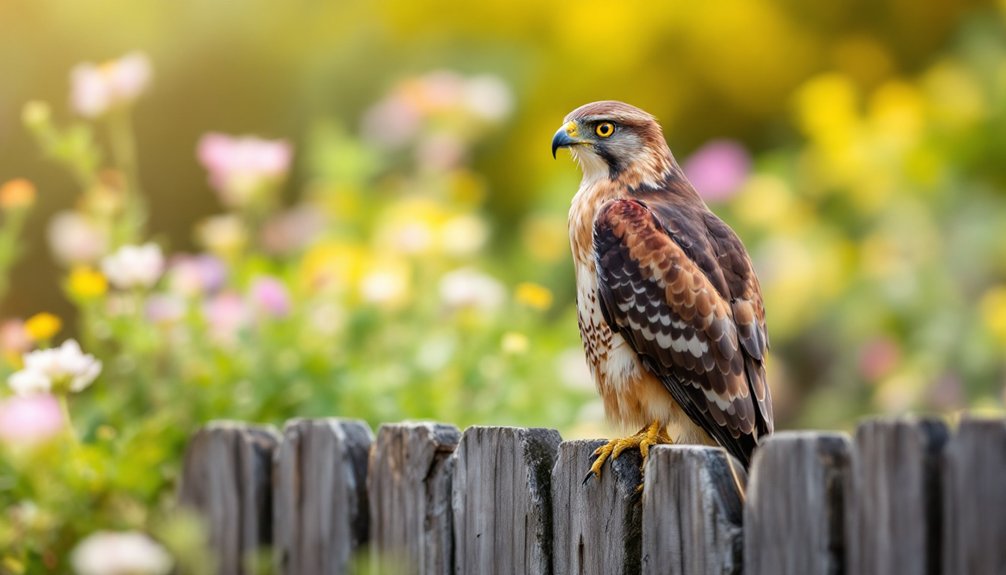
If you’re lucky, you might catch a glimpse of the elusive Cooper’s Hawk darting through Nevada’s backyards.
These stealthy raptors, with their slate-gray backs and reddish-barred chests, are expert hunters, weaving swiftly between trees.
You’ll often find them preying on smaller birds, using their sharp talons and keen eyesight.
Their presence in your backyard signifies a balanced ecosystem, highlighting nature’s intricate food web.
14) European Starling
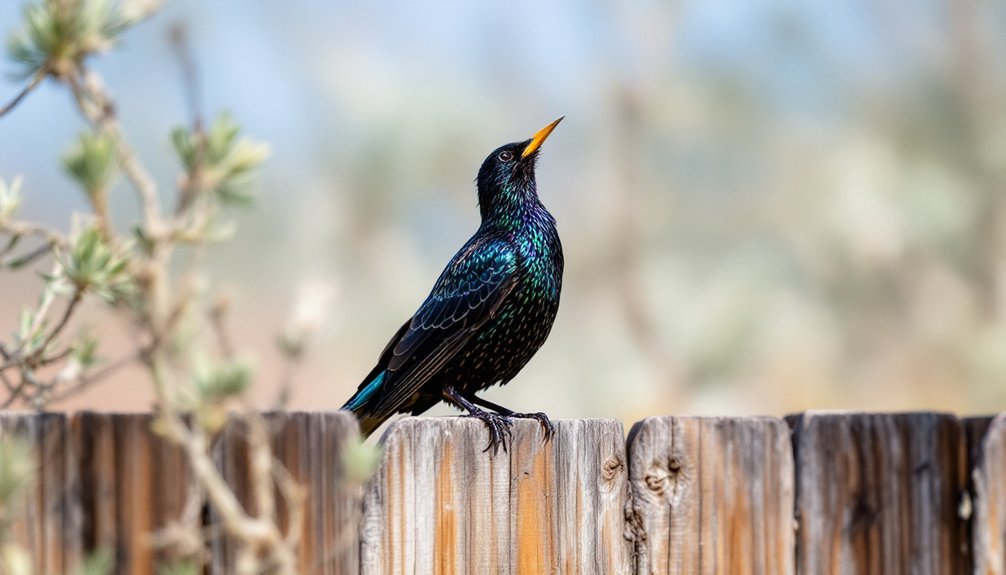
European Starlings are a common sight in Nevada’s backyards, easily recognizable by their glossy, iridescent feathers speckled with white.
You’ll often see them foraging in groups, chattering noisily as they search for insects, seeds, and fruits.
These adaptable birds, originally from Europe, thrive in urban and rural areas, displaying remarkable intelligence.
Their ability to mimic sounds, including human speech, makes them truly fascinating creatures.
15) Spotted Towhee
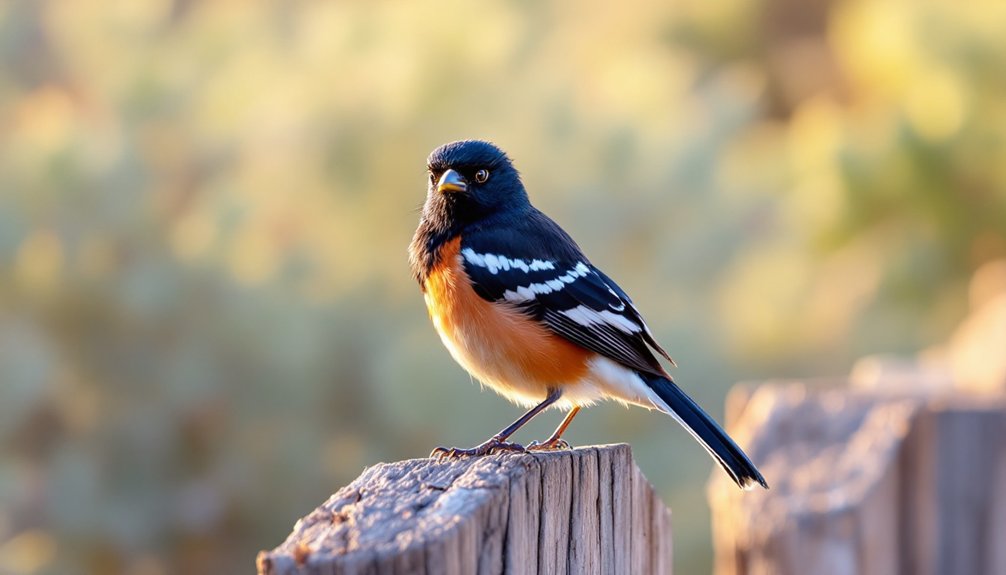
The Spotted Towhee is a striking ground-dwelling bird with distinctive coloration: males display bold black upperparts, rusty-red flanks, and a white-spotted back, while females show similar patterns in a softer brown hue.
These handsome birds are year-round residents throughout much of Nevada, frequenting brushy habitats, woodland edges, and well-planted backyards with dense shrubs and leaf litter.
Spotted Towhees are most active during early morning and late afternoon when they can be observed performing their characteristic “double-scratch” foraging technique—hopping backward to disturb leaves before pouncing on exposed insects and seeds.
16) Pine Siskin
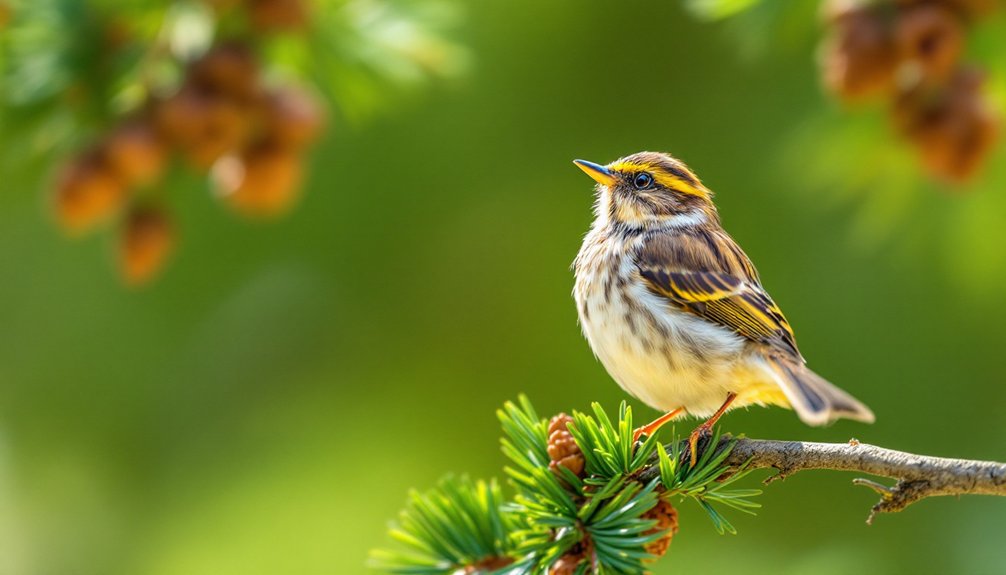
Among the delightful avian visitors to Nevada’s backyards, the Pine Siskin stands out with its unique streaked plumage and energetic demeanor.
You’ll often spot these small, lively finches flitting about, displaying their slender bills and a touch of yellow on the wings.
Attracted to feeders brimming with sunflower seeds, they travel in lively flocks, bringing a vibrant energy to your outdoor space with their constant chatter.
17) Mountain Chickadee
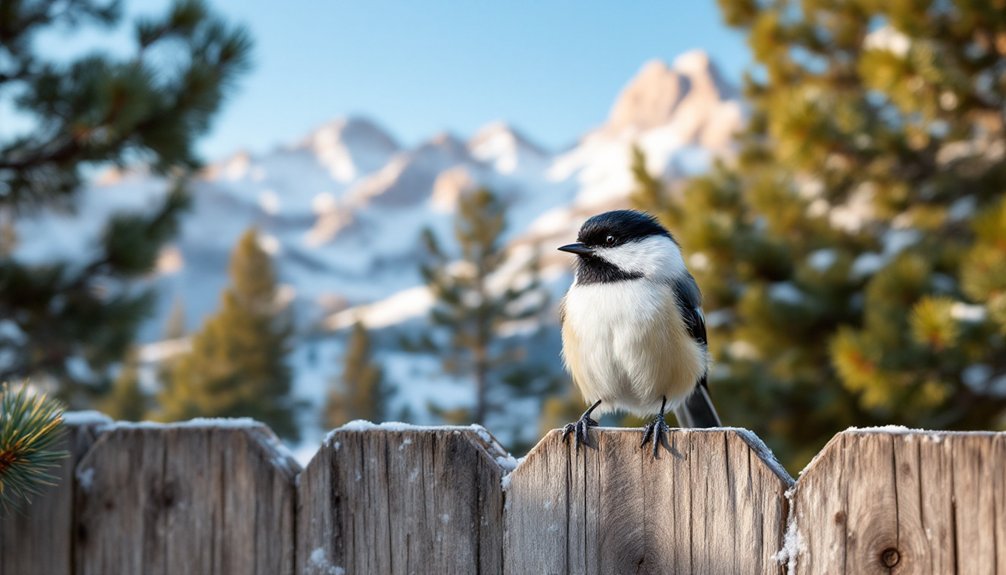
The Mountain Chickadee is an energetic, small songbird easily identified by its distinctive white eyebrow, black cap and bib, and gray body.
These charismatic birds are year-round residents in Nevada’s higher elevations but often move to lower foothill neighborhoods during harsh winter conditions, becoming regular backyard visitors from October through March.
These intelligent birds have remarkable spatial memory, caching thousands of seeds in bark crevices and remembering their locations for months—a critical adaptation for surviving Nevada’s mountain winters.
18) Red-winged Blackbird
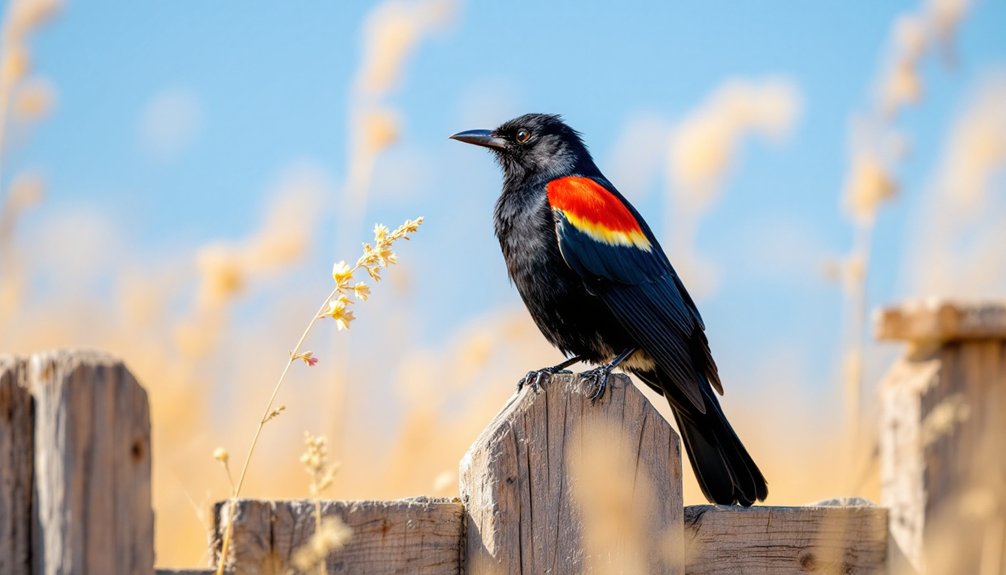
The Red-winged Blackbird adds a splash of color to Nevada’s landscapes with its striking red and yellow shoulder patches.
You’ll find them perched on cattails or reeds, often near marshes or wet meadows. Their distinctive calls, a mix of musical whistles and harsh notes, echo through the air.
These lively birds thrive in various habitats, adapting well to both natural and human-altered environments.
19) Western Meadowlark

One of the most iconic sights in Nevada’s open fields is the Western Meadowlark, a bird known for its vibrant yellow belly and melodious song.
You’ll often spot these birds perched on fence posts, singing their flute-like tunes. They thrive in grasslands, feeding on insects and seeds.
Their distinctive V-shaped black chest band makes them easily recognizable, adding charm to Nevada’s vast landscapes.
20) Great-tailed Grackle

The Great-tailed Grackle is an unmistakable blackbird with males featuring glossy blue-black plumage, long keel-shaped tails, and piercing yellow eyes, while females are smaller with brown coloration and shorter tails.
These highly vocal birds are expanding their range northward into Nevada, becoming year-round residents in urban and suburban areas, particularly around shopping centers, parks, and neighborhoods with water features.
Great-tailed Grackles are most active at dawn and dusk when they gather in noisy communal roosts, producing an impressive variety of squeaks, whistles, and mechanical rattles that dominate the soundscape.
21) Black-billed Magpie
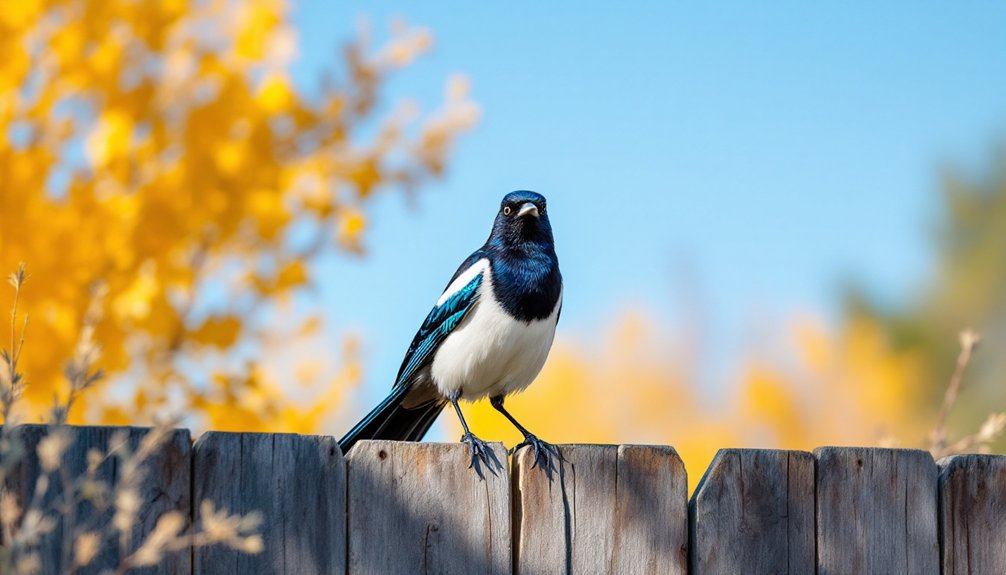
The Black-billed Magpie is a spectacular corvid with iridescent blue-black plumage, contrasting white belly and shoulder patches, and an extraordinarily long tail that accounts for over half its total length.
These intelligent birds are year-round residents across northern and central Nevada, frequenting open country with scattered trees, riparian corridors, and increasingly suburban neighborhoods with mature vegetation.
Black-billed Magpies are most active during morning hours when their harsh, chattering calls announce their presence as they investigate every corner of their territory for food opportunities.
22) Barn Swallow
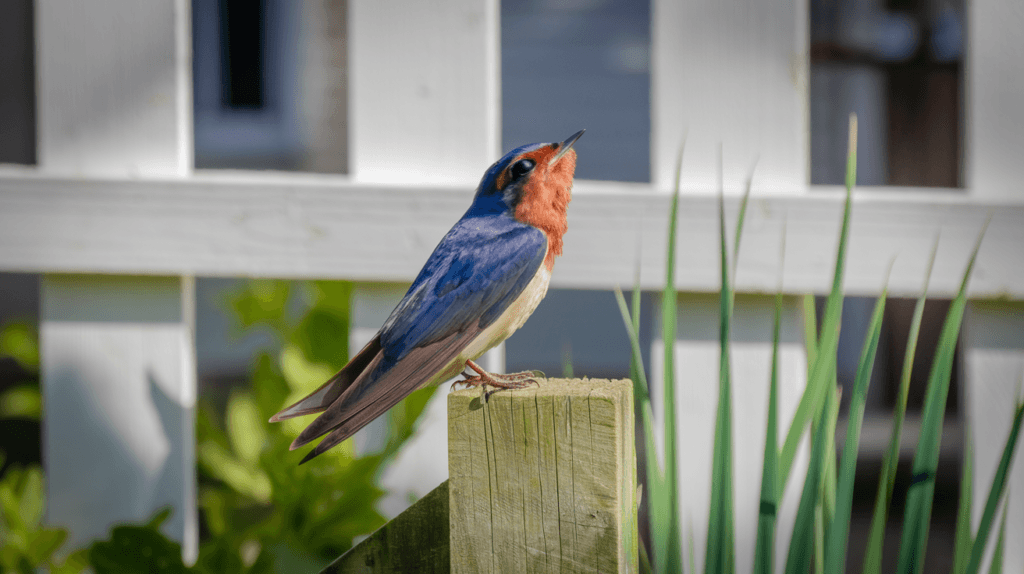
The Barn Swallow, with its sleek, glossy blue back and deeply forked tail, is a common sight in Nevada’s skies.
You’ll often see them darting gracefully, catching insects mid-flight with incredible agility. Their cheerful chirps fill the air as they build mud nests under eaves.
Watch for these aerial acrobats swooping low over fields and ponds, showcasing their impressive flying skills and vibrant plumage.
23) American Crow
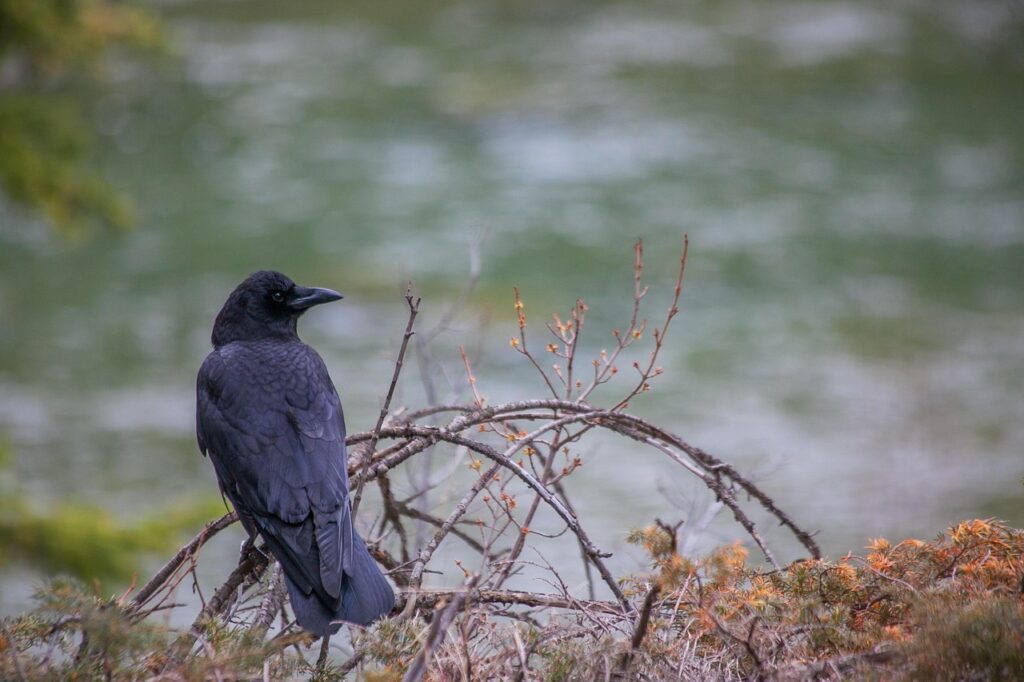
Known for their intelligence and adaptability, American Crows are a familiar presence in Nevada’s backyards.
You’ll often spot these clever birds perched on branches, their glossy black feathers shimmering in the sunlight.
They’re not just scavengers; crows also eat insects and other small animals.
Their complex social structure includes a range of vocalizations, making them intriguing to observe.
24) Cedar Waxwing
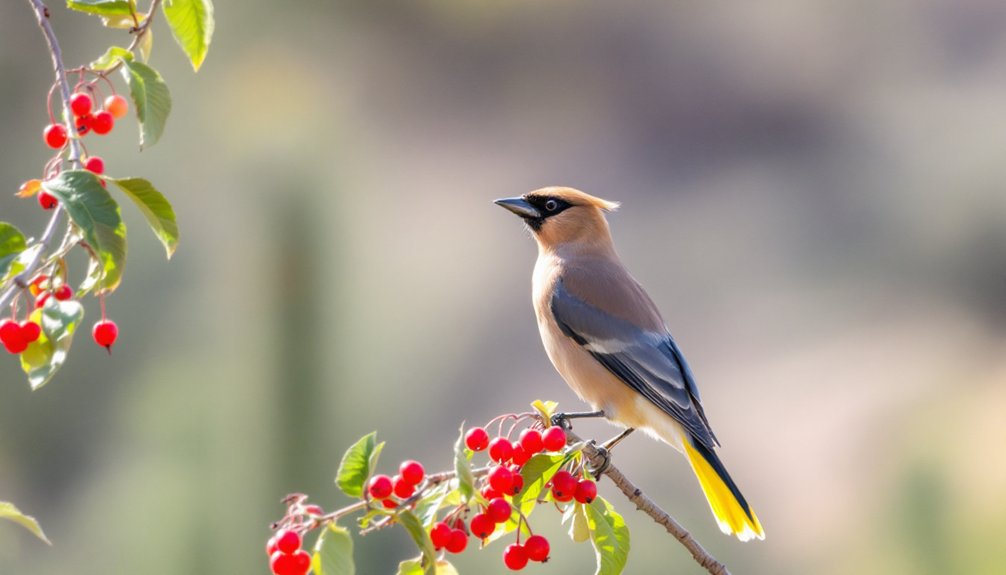
The Cedar Waxwing is an elegant, medium-sized bird with sleek brown-gray plumage, black mask, yellow-tipped tail, and distinctive red waxy wing tips.
These social birds visit Nevada primarily during winter and spring (November through May), traveling in tight flocks that descend on fruit-bearing trees and shrubs.
Cedar Waxwings are most frequently spotted in neighborhoods with ornamental berry plants like pyracantha, juniper, and serviceberry, where they can strip a tree of fruit in hours.
25) Yellow-rumped Warbler
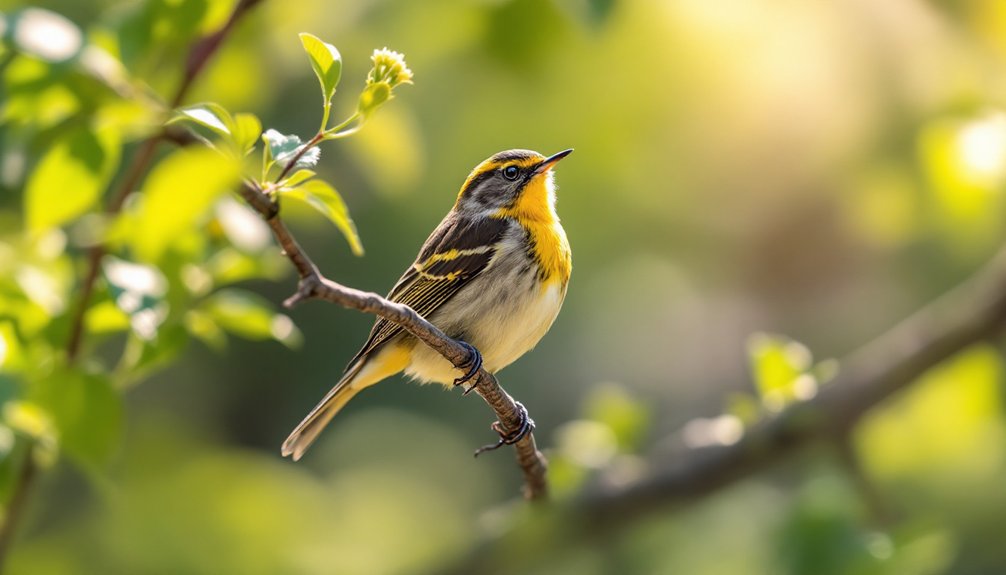
The Yellow-rumped Warbler is a small, active bird easily identified by its bright yellow rump patch visible in flight, along with yellow flanks and (in breeding males) a yellow crown.
These versatile warblers are abundant in Nevada during fall migration and winter months (September through April), frequenting wooded areas, parks, and backyards with mature trees.
Yellow-rumped Warblers are unique among warblers for their ability to digest the waxes in bayberries and wax myrtles, allowing them to winter farther north than other warbler species.
- 24 Popular Backyard Birds In New Hampshire (With Pictures!) - March 24, 2025
- How to Attract Birds to a Window Feeder? (6 Expert Tips) - March 16, 2025
- How to Provide Water for Birds in Summer? (4 Easy Ways) - March 16, 2025




